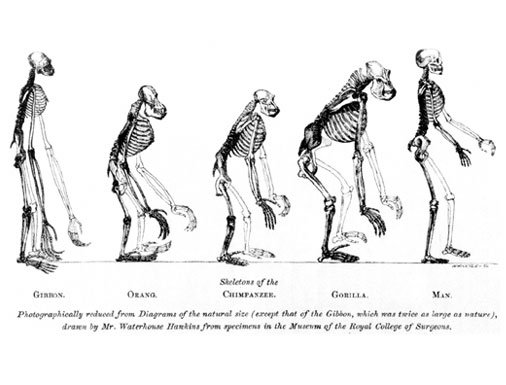Darwin's Predictions

Humans evolved from an ape-like ancestor.
Fearing that many of his contemporaries would be deeply offended if he suggested that humans and apes share a common ancestor, Darwin barely touched on human evolution in the 1859 Origin of Species. But by the 1871 Descent of Man, he was ready, stating baldly that "man is descended from a hairy, tailed quadruped, probably arboreal in its habits." He also maintained that the difference between the mind of man and that of a chimpanzee or gorilla is a matter of degree, not of kind. Summing up, Darwin wrote, "We must … acknowledge, as it seems to me, that man with all his noble qualities … still bears in his bodily frame the indelible stamp of his lowly origin." Today, many a schoolchild can cite the figure perhaps most often called forth in support of this view—namely, that we share almost 99 percent of our DNA with our closest living relative, the chimpanzee. (The illustration shown here appeared in T. H. Huxley's 1863 book Man's Place in Nature. All skeletons are to scale except the gibbon, which is shown twice natural size.)